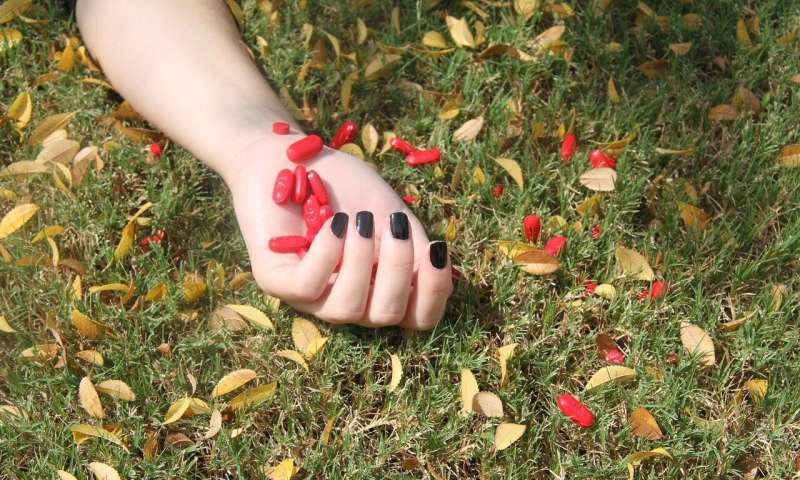Study shows significant sex, age differences for nonfatal opioid overdoses in youth

Results of a national study show significant sex and age-based differences among youth and young adults who experience a nonfatal opioid overdose. Female youth between the ages of 11 and 16 have a higher incidence of nonfatal opioid overdose compared to male youth of the same age. That reverses at age 17, however, as males between 17 and 24 have a higher incidence of nonfatal opioid overdose compared to their female peers. Led by researchers from the Grayken Center for Addiction at Boston Medical Center and published in JAMA Network Open, the study reveals specific sex-based risk factors that could be used to develop more effective strategies to screen for and prevent opioid overdoses in adolescents and young adults.
A study published in 2018 shows alarming trends related to opioid overdoses among adolescents between the ages of 15 and 19. There was a 404 percent increase in opioid overdoses from 1999 to 2016, and the mortality for opioid overdoses increased 268 percent during that time period. Yet, many youth and young adults diagnosed with a substance use disorder, or opioid use disorder, do not receive medication to treat their condition.
"We know that adolescents and young adults are impacted by the opioid overdose epidemic, but there are not enough data about how or if their risks may be different from adults," said Sarah Bagley, MD, MSc director of Boston Medical Center's adolescent and young adult addiction treatment program and the study's corresponding author. "In order to help curb this increase, we need to better understand the issues facing our patients so that we can develop tailored approaches to address any underlying conditions that may contribute to the risks for overdose."
This retrospective cohort study examined characteristics of nonfatal opioid overdoses experienced by both males and females, and then compared the incidence of nonfatal opioid overdoses in male and female adolescents and young adults. The study's data was obtained from IBM Marketscan Commercial and included a cohort of 20,312 youth between the ages of 11 and 24 who experienced a nonfatal overdose between January 1, 2006 and December 31, 2017. The median age of individuals included in the cohort was 20, and approximately 42 percent were female, and all were commercially insured.
The research data showed that females had a higher prevalence of anxiety and depression, and a history of self-harm and suicide attempts. Male youth had a higher prevalence of other substance use disorders, including alcohol and cannabis. Between the ages of 11 and 16, females had significantly higher incidence of nonfatal overdoses, but at the age of 17, that changes as males then have higher incidence of nonfatal opioid overdoses.
"The study results provide significant insight into the co-occurring issues impacting our adolescent and young adult patients," added Bagley, who is also an assistant professor of medicine and pediatrics at Boston University School of Medicine. "We hope that this data will serve as a basis for developing targeted interventions to prevent nonfatal opioid overdoses, as well as strategies for more effective access and engagement in treatment for this population."
More information: Sarah M. Bagley et al, Incidence and Characteristics of Nonfatal Opioid Overdose Among Youths Aged 11 to 24 Years by Sex, JAMA Network Open (2020). DOI: 10.1001/jamanetworkopen.2020.30201




















